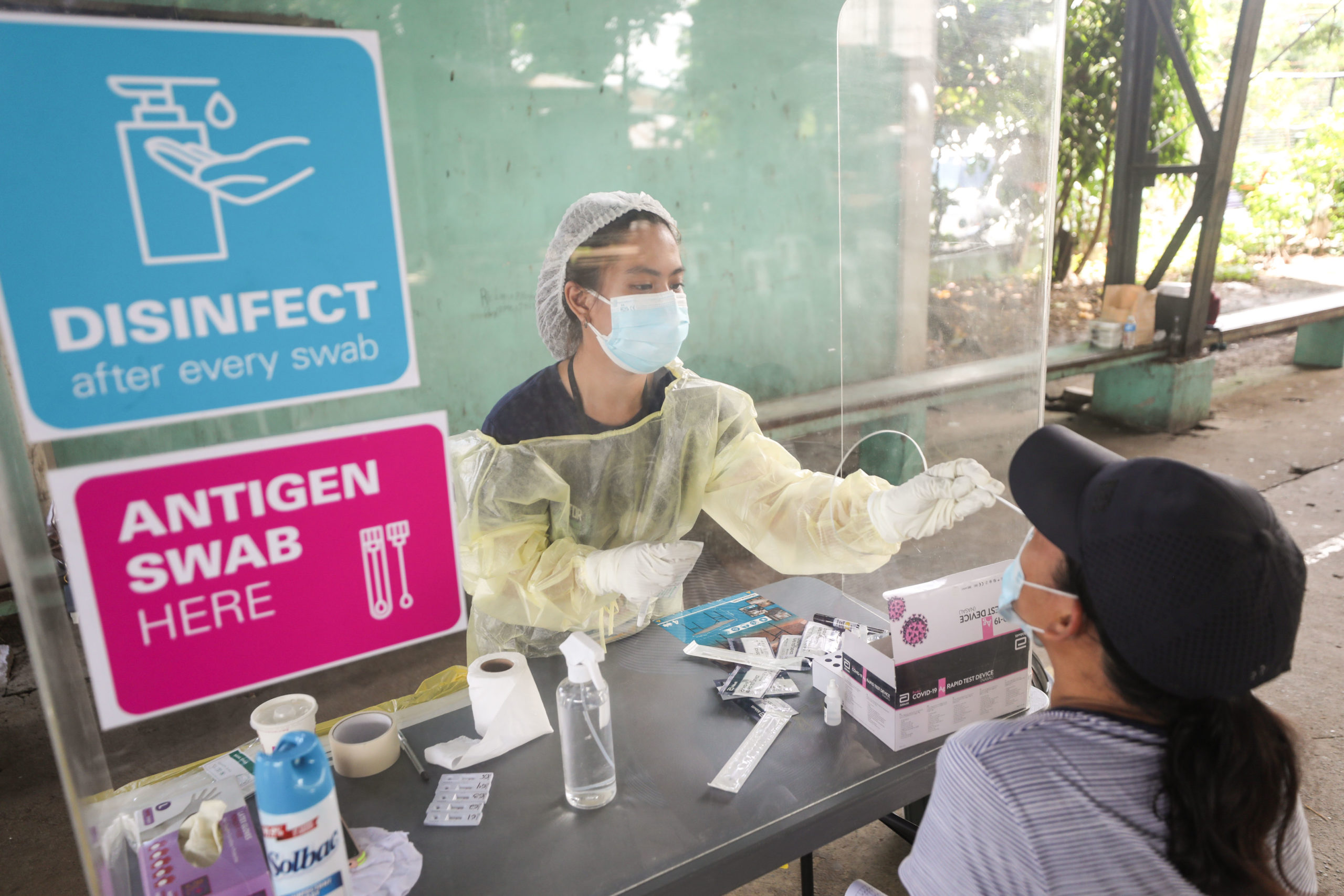PH logs 4,600 new COVID-19 cases; active cases at 21,418

(FILE) The Swab Cab initiative of the Office of Vice President Leni Robredo returned to Imus, Cavite, offering free antigen testing in identified areas to help in local government efforts against COVID-19. Photo by Jay Ganzon / OVP
MANILA, Philippines — The country has recorded 4,600 new COVID-19 cases — the highest recorded since Oct. 24, 2021, the Department of Health (DOH) said.
The new infections raised the number of active COVID-19 cases to 21,418, or almost back to the number of cases the country had in November of last year before the number of daily cases dipped below 1,000 during the holidays.
The positivity rate also increased to 19.6 percent even despite the relatively low number of tests conducted at 26,122. This is dramatically higher than the World Health Organization’s threshold of 5 percent which indicates controlled transmission of the SARS-CoV-2.
Of the new cases, the DOH said 99 percent or 4,548 of the 4,600 cases were recorded in the recent 14 days. The National Capital Region was again listed as the top region with 3,279 cases or 72 percent in the recent two weeks; followed by Region 4-A with 676 or 15 percent; and Region 3 with 252 or 6 percent.
The DOH also reported 535 new recoveries.
With this, confirmed cases now total 2,851,931, while recoveries to 2,778,943.
Of the active cases, DOH said 76.6 percent are mild or asymptomatic cases, specifically, 15,644 individuals have mild cases, 769 are asymptomatic, 3,081 are moderate, 1,689 are severe, and 335 are critical.
The DOH also recorded 25 new deaths, bringing the country’s death toll to 51,570.
These numbers were registered while two laboratories were not operational when the tests were conducted on Dec. 31, said the DOH. Meanwhile, nine other laboratories were not able to submit their data to the COVID-19 Document Repository System.
“Based on data in the last 14 days, the 5 labs contribute, on average, 0.8% of samples tested and 1.5% of positive individuals,” the DOH said.
The health agency likewise said that 38 duplicates were removed from the total case count, 36 of which were recoveries.
The DOH also said that it removed from the total case count the 117 cases that were found to have tested negative for COVID-19.
Moreover, the DOH said 7 cases that were previously tagged as recoveries were reclassified as deaths after final validation.
RELATED STORIES
Metro Manila now at high risk for COVID-19 transmission – OCTA Research
COVID-19 reproduction number in NCR rises to 4.05 – OCTA fellow
/MUF
For more news about the novel coronavirus click here.
What you need to know about Coronavirus.
For more information on COVID-19, call the DOH Hotline: (02) 86517800 local 1149/1150.
The Inquirer Foundation supports our healthcare frontliners and is still accepting cash donations to be deposited at Banco de Oro (BDO) current account #007960018860 or donate through PayMaya using this link.
